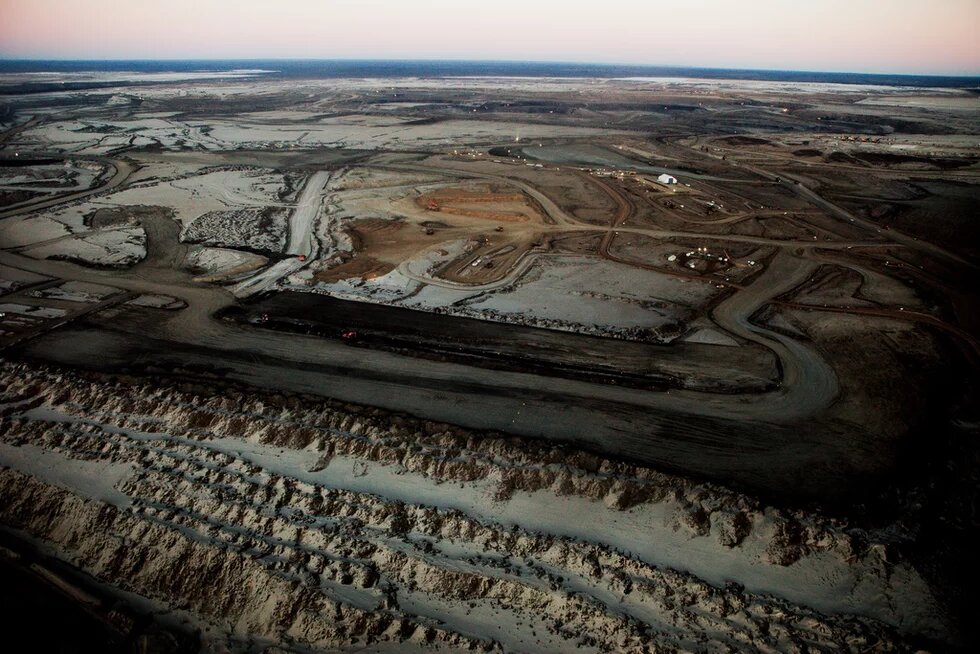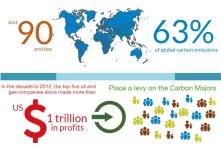
The conference “Legal Remedies for Resource Equity”, whick took place on September 15th, focused on the use of environmental law to prevent the negative impacts of global resource extraction. A documentation of Barbara Unmüßig's keynote and presentations of the speaker's corners.
Distinguished guests,
Ladies and Gentlemen,
Dear friends,
A warm and cordial welcome to the “Legal Remedies for Resource Equity” conference. I am delighted to have the opportunity to share some thoughts and ideas with you. The quantity and speed of climate change as well as the loss of biological diversity and erosion of ecosystems have never been more pronounced than they are today. From the extraction of tar sands in North America and in Congo to large-scale land purchases in Asia and Africa, from oil and gas exploration in many vulnerable ecosystems such as tropical forests, the Arctic, and coastal zones to mining and soya production in Latin America – the global resources bonanza is a fact.
The race for control over natural resources is at full speed, and the political and corporate elites have little appetite to give up their power and profits. In addition to alI of the disastrous social and environmental impacts that we would like to mention here, there are a few trends related to the resources bonanza that should be highlighted.
- One trend is the dismantling of environmental regulatory systems and social and environmental safeguards to make it easier to secure private-sector investments. Examples of this can be found in Brazil (forest law) and most recently in India (where there are no longer safeguards or impact assessments for mining projects), in addition to the dismantling of safeguard policies of the World Bank Group.
- Secondly, there has been an increase in the repression and criminalisation of social and environmental activists in many countries. New so-called NGO laws restrict the activities of civil society and undermine basic civil rights. The report “Deadly Environment”, published by the British NGO Global Witness in April of this year, reveals that at least 908 people in 35 countries were killed protecting rights to land and the environment between 2002 and 2013. The death rate in the last four years was an astonishing two activists a week.
- Thirdly, few people retain any illusions that international regulatory frameworks such as the Framework Convention on Climate Change and the Convention on Biological Diversity are going to set ambitious and globally binding caps and targets to stop dangerous global warming, the loss of biodiversity, or the depletion of arable soil and water.
What we are observing is an unholy alliance of OECD and emerging countries that have no interest in setting strong environmental limits and targets or combating the root causes of poverty. And I do not have much hope that the so-called Post-2015 process to forge Sustainable Development Goals is going to make a difference.
Politics is responsible for the dismantling of environmental regulatory standards and safeguards. Politics is responsible for underfunding the protection of public goods such as biodiversity. Times of deregulation and privatisation are not over by any means. In fact, the contrary is true. It is governments that are setting a friendly framework for the private sector to identify new sources of profit, which fits perfectly in the rentier economies of many governments and political elites. The loss of biodiversity has never been higher, and the political will to protect it through strong legislation never weaker. Right now there are governments, economists, international institutions, and large environmental NGOs creating ways to value, price, monetise, and financialise “ecosystem services”.
The question of how to turn the act of protecting nature into a valuable business is gaining more attention, with advocates arguing that biodiversity and conservation policies must have economic incentives in order to receive sufficient attention from policymakers and business. The working hypothesis is: “We use nature because it’s valuable, but we lose it because it’s free.” The logic: Let us establish an economic value for ecosystem services – for instance, water filtration through peatlands, or the sequestration of a forest’s CO2. This will persuade politicians. And if a price and a market are established for ecosystem services, it could become a source of profit and draw the attention of the private sector.
This not just theory – the pricing and monetising practices have already started. HBS and myself have published extensively on this issue. I can only shed some light on why we think that the new approach of monetising nature is not only problematic and questionable, but a false answer. I would like to highlight some issues that I consider to be structural problems to this approach.
1. The concept of “offsetting”
REDD (Reduction of Emissions of Deforestation and Degradation) is the most comprehensive global approach for valuing ecosystem services. The idea sounds great: The conservation of the forests – not their deforestation – should be turned into a source of profit. The ecosystem service of storing CO2 is quantifiable (x tons), so the ecosystem service can be calculated in dollars and cents. One also has to set up a market to trade CO2 certificates. I cannot go into details here, but what take place here are compensation deals.
The market allows for the destruction of nature and then compensates for it somewhere else. Therewith, a highly problematic coupling is enforced: The payment for nature conservation is now linked to the destruction of nature – and not as individual and negotiated compensation measures, but as a regular mechanism.
Offsetting ignores completely the fact that ecosystems are characterised by a variety of natural, social, and cultural interactions, mostly locally based. The forest is reduced to its CO2 storage capacities. The CO2 market and offsetting mechanism attempt to compare uncomparable and complex ecological and social systems. With this economic logic, a highly diverse forest is destroyed and compensated for by planting elsewhere – let us say eucalyptus – thereby storing the calculated CO2 equivalent of the highly diverse forest. This is absurd logic and a road towards further destruction.
2. Private property and the enclosure of the commons
Trading in CO2 certificates or other monetary ecosystem services generally presupposes private ownership of these “services of nature”; only what has been appropriated as private or state property can be sold. Thus, the question arises: Who owns the forest with its CO2-storing trees? To whom does soil, peatland, or even the air belong? Many of the ecosystems that are still reasonably intact are home to indigenous and traditional groups.
In these locations, conflicts within the affected local communities – as well as between them and the outside world – are preordained. Moreover, where fields, meadows, and forests are managed as commons, these market-based instruments threaten or actually destroy them.
3. Methodology
Quantifying services of nature is difficult: Which criteria are included in the calculation? Which are not? Who measures it and who assesses the value of nature? There is no specific economy that could make an objective scientific judgment about what something is worth to us. There can be no “true value” of an ecosystem. Nevertheless, the new Natural Capital Agenda of governments and international institutions captures nature and places it in the care of the financial sector. Do we want this?
Countless debates unfold, seminars are held, and papers are written with the objective of determining a clear methodology for the economic valuation of nature and its services. Economic methodology has no democratic legitimacy, and economic “value judgments” are delivered without societal consensus and democratic legitimacy – although nature is certainly of societal relevance and concerns us all. Even more important: When those with money can afford to pay for a licence to avoid having to obey the law, a very basic legal principle – that of equality before the law – is nullified.
What can lawyers and legal experts do? Ladies and gentlemen, what is your role in this regard?
In order to avoid the slippery slope from valuation to commodification and financialisation, we must revisit one of the hallowed principles of environmental policy: the precautionary principle, which insists upon doing no harm in the first place. Valuing nature in monetary terms can be appropriate in the application of the polluter pays principle. In the event of environmental damage (such as an environmental disaster), the responsible entity must provide “appropriate” compensation for the value of the damage. As the damage has already been done, the demand for repayment can serve as a deterrent, raising the economic stakes of future disasters. The focus is no longer on estimating the value of the ecosystems themselves, but on the costs for the necessary repairs.
Consider, for example, the Deepwater Horizon oil spill from 2010. No amount of money can completely undo the damage done to the Gulf of Mexico. The counsel of the precautionary principle remains paramount: The drilling should have never started in the first place. Many speakers at today’s conference will present concrete cases that demonstrate the power of the precautionary principle as well as the polluter pays principle – but they will also speak about the difficulties of enforcing them against the powerful interests in the extractive industries sector.
Over the past several decades, we have seen not only increasing environmental degradation, but also the erosion of the concepts of the public good and the collective responsibility to preserve nature. In embracing the monetary valuation of nature as a strategy for mobilising support for environmental conservation, environmentalists are resigning themselves to a political status quo that can only comprehend value in terms of money and markets. By doing so, they are silently accepting the failure of politics.
The struggles we are fighting are political ones that cannot be replaced through a cost-benefit analysis. We have to create alliances to find political majorities for change. We need to put politics first. And we need lawyers and legal experts with strong environmental backgrounds and interests to carefully analyse how law reforms (for example, the reform of land, forest, and mining codes) pave the way for a financialisation of nature, and if and where environmental policies that rely on market-based instruments undermine democracy and violate environmental and human rights.
During the conference 20 international environmental advocates, scientists and activists presented current law reform, litigation and campaign work related to resource equity and resource conservation. You can find their poster presentations here: Speaker's Corners Presentations (PDF).
For further informations on the conference, visit the documentation of the "Unabhängiges Institut für Unweltfragen".


